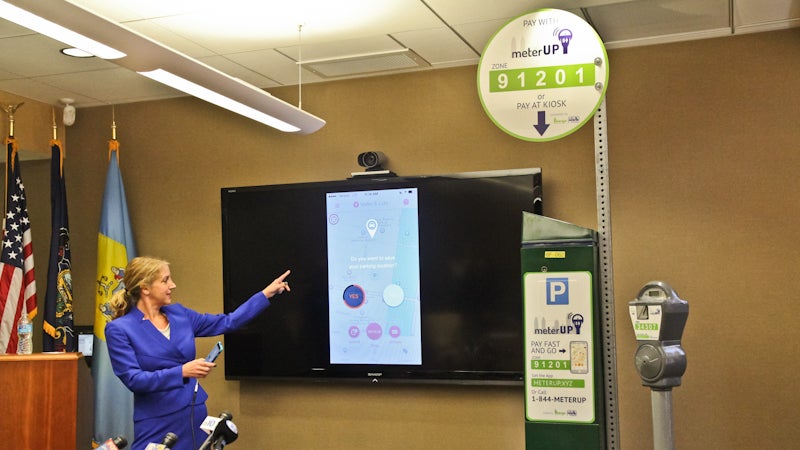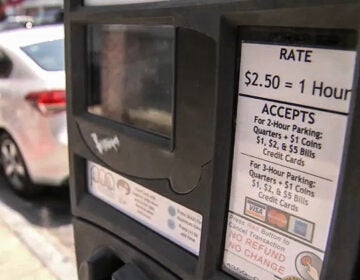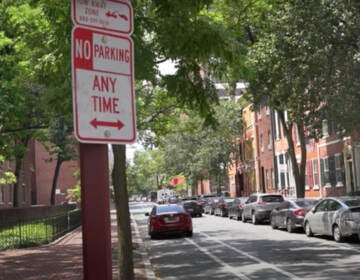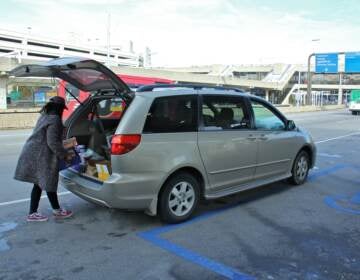New PPA pay-by-mobile app for parking pilot launches Thursday

The Philadelphia Parking Authority (PPA) announced today that its new pay-by-mobile app, meterUP, will launch in pilot areas Thursday morning.
And if you need added incentive to get it, the first 5,000 users will get their first hour of parking free.
The app, available on iTunes and Google Play, allows drivers to link a credit or debit card with their phone and pay for parking via the app. It also allows for drivers to extend their parking remotely.
This move was a long time coming. Pango USA, the contractor selected by the PPA to develop the meterUP app, has provided similar products to New York City, Harrisburg, Wilkes-Barre, Butler and Latrobe.
The six-month pilot begins Thursday. The test area will cover 1,775 parking spaces between Fourth and 20th streets, and Arch and Locust streets, plus spaces along Columbus Boulevard from Spring Garden to Race streets. There will also be test spots at SEPTA’s Torresdale station lot and at the PPA’s lot at 8th and Chestnut.
Once the pilot period ends, the PPA expects to expand the app to all 16,000 of its on-street and off-street parking spots across Philadelphia.
PPA project manager Sue Cornell provided a demonstration of meterUP at the PPA headquarters Tuesday. The app seemed fairly straightforward. Users download it and sign up for the service by providing cell phone number, email, and credit card information. Users are then able to add up to 10 different cars into the app by providing make, model and license plate number. Once the profile is set up, the app will retain that information.
To pay for parking, users park and then find the nearest parking kiosk – where most of us go today to pay using cash or a card to get a ticket to place on our dashboard. These kiosks have zone numbers, which the user enters into the app. Users would then select how long they intend on parking and hit pay. When you return to your car, you can use the app to say that you are leaving, and if there is time remaining, you can get money back. (That’s dependent on there being more than a single chunk of time left; for example, if that zone charges by the quarter hour, then leaving 15 or more minutes early will net you a small refund.)
To encourage user turnover, there will be an upper limit to how long someone can park. In a two-hour zone, for example, users can pay the regular rate to park for up to 2 hours. If they decide to extend behind that, they will pay double for another 2-hour period, and then triple for the two hours after that. For example, in a $2 per hour zone, that would be $4 for the first two hours, $8 for the next two, and then $12 for hours five and six, for a total of $24. Users won’t be able to stay longer than three times the length posted for that zone.
When users get close to going over their limit, they will receive a text message warning them. And when users actually go over the limit, you can be sure that PPA meter attendants will also receive a notification.
Pango will get 1 cent per transaction, as well as 80 percent of ad revenues from the app, which has a feature for users to see coupon offers from nearby retailers. The remaining 20 percent will go to the PPA. Pango will cover all of the operating costs from card processing fees, wireless data plans, and new signs showing how to use the app.
PPA Executive Director Vince Fenerty said that he expects the new app to be revenue neutral for the agency. The Nutter Administration expressed reservations in the Spring, worried that it would reduce the agency’s profits, which get passed on to the School District of Philadelphia and Commonwealth of Pennsylvania. The School District received $9.7 million from the PPA last year.
Technophobes still clinging to so-called dumb phones or who might use a non-Android compliant Windows or Blackberry phone can still pay-by-phone. Other smart phone users can sign up and pay via a mobile website, meterup.xyz. You will also be allowed to call in and pay over the phone like it’s 2002 still.
WHYY is your source for fact-based, in-depth journalism and information. As a nonprofit organization, we rely on financial support from readers like you. Please give today.






